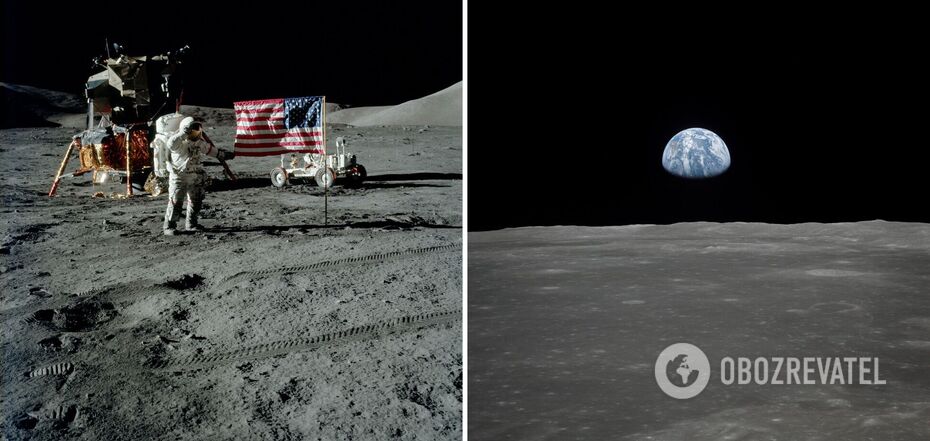Life
The source of earthquakes on the Moon was the abandoned Apollo 17 landing module: what's going on there
Three seismometers left on the Moon in the 1970s to collect data on seismic activity on Earth's satellite have found that the landing module of the Apollo 17 mission (lunar mission December 7-19, 1972) is the source of minor earthquakes.
This is stated in a study published in the JGR Planets. Scientists also managed to establish that seismic activity on the satellite is closely related to the Sun.
It is known that the Moon was geologically active between 3.7 and 2.5 billion years ago. Back then, earthquakes, volcanic eruptions and underground gas emissions occurred on Earth's satellite. Since then, however, the Moon has become geologically inert and little seismic activity there occurs due to the Earth's gravitational pull as well as significant temperature fluctuations.
It is the temperature earthquakes that occur regularly because they are related to the Sun.
The latest study of seismic activity on the Moon was conducted by researchers from the California Institute of Technology (Caltech), who used NASA funds to run the data obtained by seismometers through artificial intelligence algorithms from October 1976 to May 1977.
As a result, they were able to discover that lunar earthquakes occur with a clear regularity and coincide with the rise of the Sun to a peak position in the sky, followed by a slow sunset.
Scientists noted that such earthquakes could become a kind of "lunar alarm clock" that future missions on the Moon could use.
Unlike tidal fluctuations in the interior of the Moon, lunar earthquakes are caused by significant temperature changes in the lunar crust. Since there is no air on our satellite, heat from the Sun is not trapped, it heats the surface directly, leading to dramatic temperature changes.
In particular, the Sun heats the crust to 120 °C during the day, while at night the temperature drops to minus 133 °C. Such variations cause the crust to expand and contract rapidly, causing minor seismic events. These are what seismometers left behind by the Apollo 17 mission astronauts in 1972 were able to record.
In addition to thermal earthquakes, scientists also found another type of tremor that did not coincide with the activity of the Sun.
Scientists found that the source of the activity was several hundred meters from the seismometers by triangulating the signal. It was the Apollo 17 landing module.
They hypothesize that each morning sunlight heated not only the moon's surface but also the landing module, causing its materials to expand, which eventually led to vibrations in the ground detected by the seismometers.
"Every lunar morning when the Sun hits the landing module, it starts bouncing around," explained geophysics professor and co-author of the new study Allen Hasker.
The data could have important implications for future lunar missions, including NASA's Artemis program. Although thermal earthquakes are too small to be felt on the Moon, these findings provide vital data that can be used in the design of future landers and equipment. This includes the selection of components from which future bases of the Artemis program will be built.
Earlier OBOZREVATEL explained why all countries are so eager to land on the south pole of the Moon.
Subscribe to OBOZREVATEL channels on Telegram and Viber to be aware of the latest events.



























